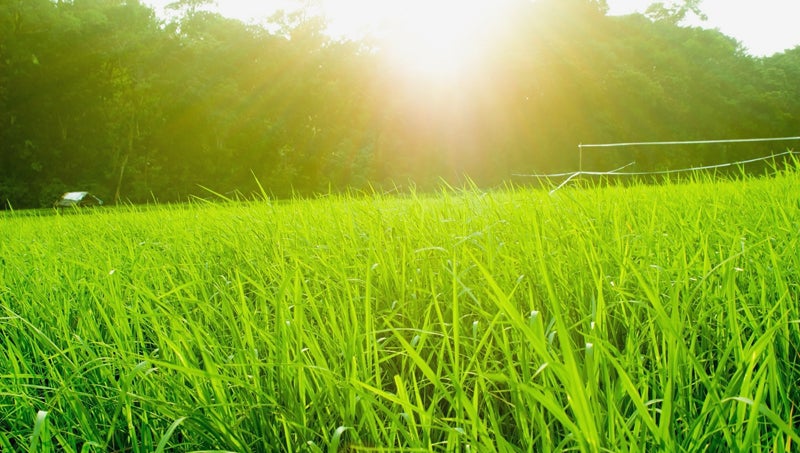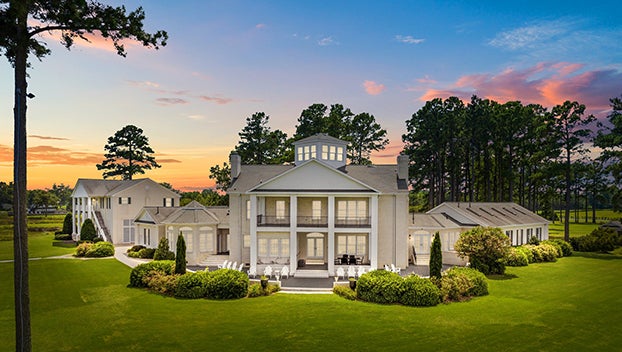Wrestling with what type of grass to choose?
Published 8:13 pm Thursday, March 12, 2020
|
Getting your Trinity Audio player ready...
|
Are you renovating or starting a new lawn this year? The first question to answer is what type turf do you need? Unfortunately, there is not a one-size-fits-all answer! It depends on the person or family and their specific needs.
The best grass for your home yard is the one that most fits your needs. There are many questions to go through when choosing a type of turf.
- Do you have dogs, children or grandchildren?
- Do you want to be hands-on with lawn maintenance or hands-off?
- How much sun does the yard receive per day?
- Do you need warm-season turf or cool-season turf?
How you answer these questions will determine the type of grass that best fits your needs. If you live east of Interstate 95, cool-season grasses are not for you. Most cool-season grasses in this area will live for one to two years and then die out from heat.
Warm-season grasses are a little different. I answer questions all the time from folks that have moved from up North or even western North Carolina; “What happened to my grass … It died after the first frost?” Your grass isn’t dead, it is dormant. Warm-season grasses go dormant in the winter and will green-up again when soil temperatures begin to climb in the spring.
Some grasses tolerate traffic (i.e. kids, dogs, equipment) better than others. Bermuda, for instance, will recover very quickly after injury such as a soccer or lacrosse game, making it a great choice for athletic fields or even a home lawn with young children.
The warm-season grasses that are used most often are Bermuda, Zoysia, St. Augustine and Centipede. Each of these grasses have several varieties and textures from which to choose.
One more thing about choosing a warm-season grass: they typically need a minimum of six hours of direct sunlight to flourish. There are a few varieties that claim they tolerate more shade, but I do not have research-based data to recommend one.
Centipedegrass is the most popular grass in Beaufort County. It is called the lazy man’s grass or centiweed in some circles. Centipede needs fertilizer once per year (if at all), requires mowing to 1 to 1 1/2 inches on a weekly basis and, in our acidic soils, very rarely needs lime (centipedegrass likes a pH of 5.5). Sounds great, right? Centipede is also one of the most susceptible to disease, winter kill, cold sensitivity, nematodes and herbicide injury. It will not tolerate much traffic or recover quickly from injury and can take up to three years to establish, if using seed. The first year it sleeps, the second year it creeps, the third year it leaps.
Bermudagrass on the other hand, is a very prolific-growing grass. It will spread, recover and fill-in very quickly; for this reason, it must be mentioned that it requires mowing on a regular basis as well. The fertilizer recommendation is three to five times per year with a total nitrogen recommendation of 3 to 5 pounds per 1,000 square feet.
If you are renovating an existing lawn or establishing a new lawn, the time is quickly coming upon us to get that done. Warm-season grasses like warm soil so the best time to establish them is when they want to grow! Plan to get this done as early as possible in the season so that your grass has ample time to develop a good root system. Grass that is installed between May 1 and June 1 will have the best stand.
If you would like more information about your lawn, visit Beaufort County Extension Center or give me a call. Look for Carolina Lawns, an interactive workshop coming up in April at the Beaufort County Center. Interested in being a Master Gardener? There is going to be an Extension Master Gardener Volunteer training series this September. Sign-up for our information list at go.ncsu.edu/bocoemginterest to receive updates. Call the Extension center today at 252-946-0111 to learn more or visit the Blacklands Area Horticulture page on Facebook! Stay tuned for more upcoming classes throughout March and April.






